Visit our stand at international fair dedicated to horses - Partner Pferd in Leipzig hall no. 1 stand no. 109. We're looking forward to meeting you!
VETOFLEX s.r.o.
vetoflex@vetoflex.com
+420 777 518 213
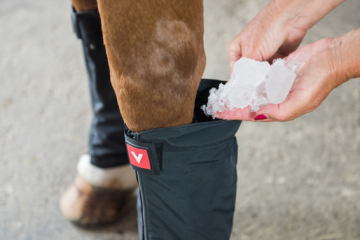
Compressive bandages are our specialty, the development of which we are constantly working on. The latest product from the Vetoflex workshop is Vetoflex Classic Ice compression bandages.
The basic function of horse bandages is their ability to significantly help to maintain the proper flow of lymph in the horse's lymphatic system. Classic Ice compression bandages bring something extra. Thanks to the cooling effect of the ice inserted into the bandage, faster regeneration is achieved in case of inflammation or after increased exertion.
It is well known from folk medicine, human medicine and veterinary practice that cold reduces the activity of inflammatory processes and brings relief from pain. Cold therapy relieves muscle tension and improves blood circulation in inflamed areas.
The cold, together with the compression that the bandage exerts on the affected area, multiplies the beneficial effects of the Vetoflex Classic Ice bandage application.
Compressive cooling bandages are an indispensable tool for both inflammation and tendon injuries. They can also provide relief to the horse after sports performance. Ice baths, which are enjoyed by top athletes with the aim of faster muscle regeneration, have recently become very famous. You can now treat your horse to something similar.
Bandages Vetoflex Classic Ice are made of highly elastic and breathable material, originally developed for human medicine. We used the excellent properties of this material precisely for this new product of ours. Its benefits also include the ability to protect the skin from burning, which would occur if the ice were applied directly.
We offer Vetoflex Classic Ice bandages in 4 lengths depending on the height of the horse: STANDARD, SHORT, LONG, PONY.
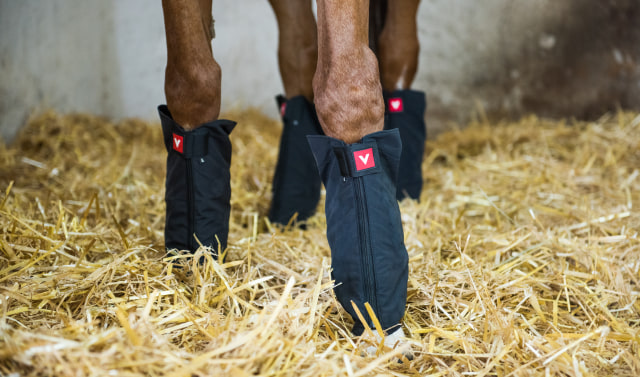


Are you interested in this new product and would you certainly like to treat your horse to its benefits? Choose the right size from our range.
Now with every VETOFLEX Bandage ICE bandage purchased at the CR Championship on August 3 - 6, 2023, you will also receive a bottle of chilled sparkling wine for free! And that's not all! Until the end of August, you can buy VETOFLEX Bandage ICE bandages in our e-shop with a 25% discount!
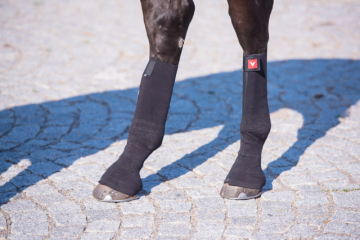
We would like to thank the Central Bohemian Innovation Center for supporting us!

The goal of the project was to create a functional prototype and a new industrial one pattern of a special compression bandage for the treatment of lymphangitis and phlegmons in horses, with predominant swelling localized under temporomandibular joint.
For this type of swelling caused by inflammatory process in the area of the lymphatic pathways of the horse's leg at the present time there is no special therapeutic agent. Because compression therapy has proven itself in the treatment of diseases of lymphatic channels and lymphatic swellings in both human and veterinary medicine and the company VETOFLEX manufactures the market a proven own product – a compression bandage for the sphincter joint and shin, will create an innovative compression type bandages a breakthrough in the treatment of this type of equine disease.
The working name of the new compression bandage prototype is "VETOFLEX LEON BANDAGE". The project aims to design and create the optimal shape of the bandage with taking into account the predetermined size range of limbs. IN design a pilot sample and confirm the material by testing product composition with regard to the possible extension to variant s antibacterial silver thread and make the final functional prototype separately for each size.
Your VETOFLEX team
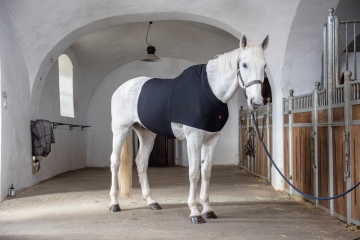
Gastrointestinal diseases in horses are one of the most common reasons for hospitalization in specialist emergency clinics (Southwood et al. 2009, Viljoen et al. 2009). Colics were also the most frequently solved acute problem among practicing veterinarians (Traub-Dargatz et al. 1991). It is very difficult to obtain a long-term, objective and error-free study that would conclusively determine the incidence of colics in the horse population. The percentage value of the occurrence of the risk of colic disease in all equines is reported from 2.8 to 2.9% (NAHMS 2015; Slater 2016).
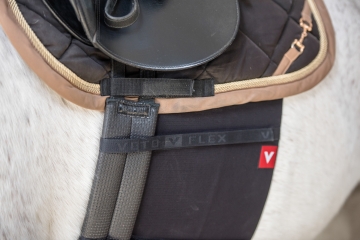
Dnes se vám pokusíme přiblížit a vysvětlit základní pojmy z této velice mladé a dost často opomíjené oblasti medicíny a jak a proč může dojít k otoku nohou u vašeho koně, které potrápí někdy každého chovatele či jezdce.
VETOFLEX s.r.o.
vetoflex@vetoflex.com
+420 777 518 213